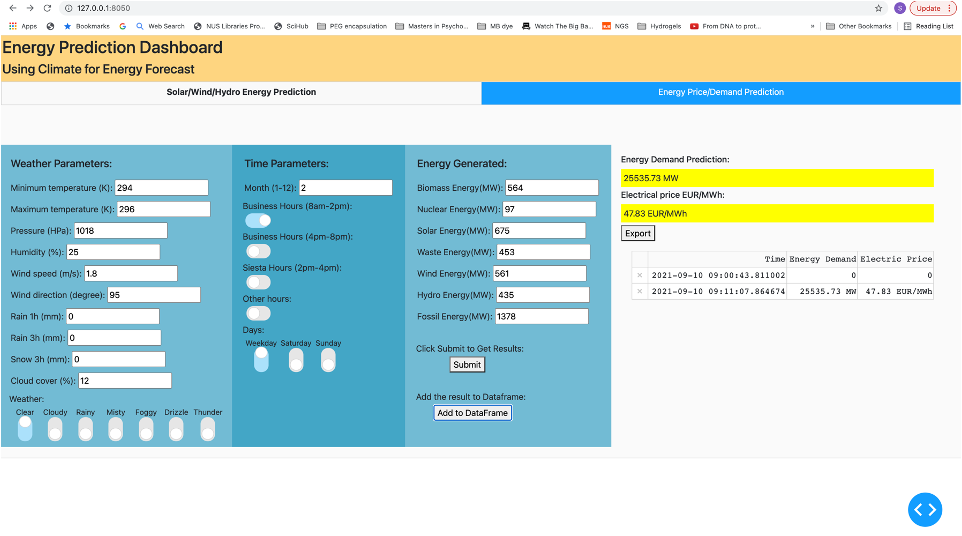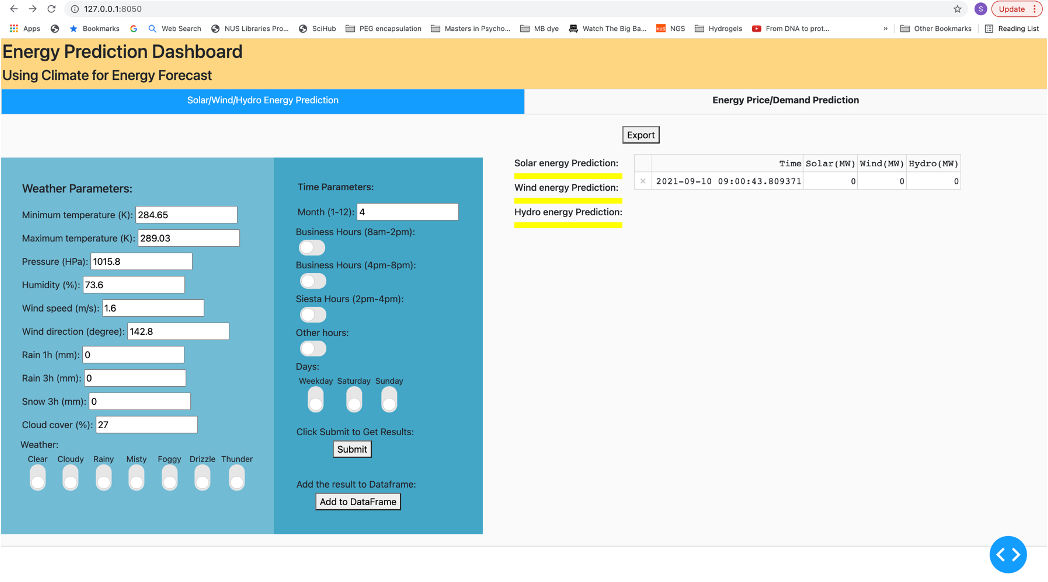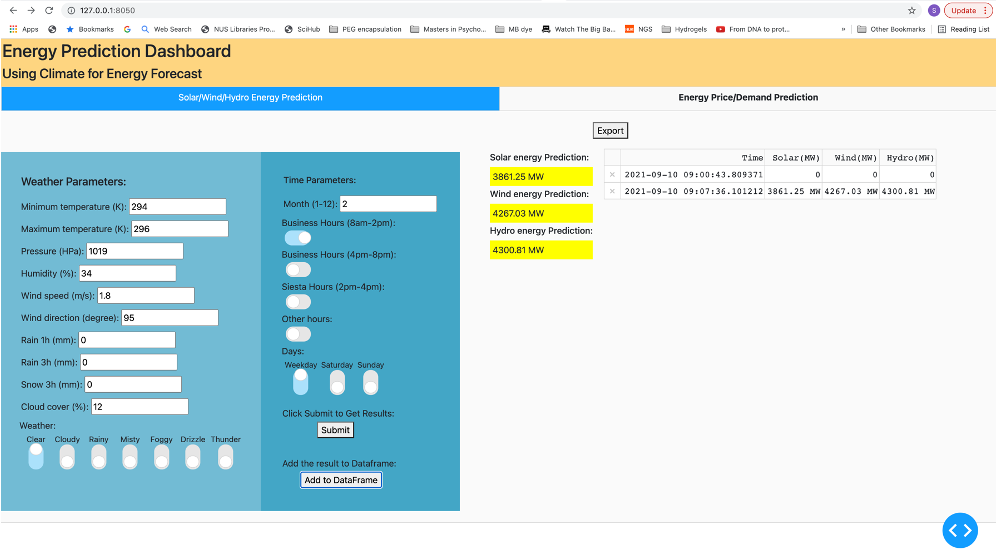This project is from Siddharth Deshpande, which was awarded with the Innovation Award in the Global AI Innovation Challenge 2021 - Intelligent Weather Forecast for Better life.
The goal of the project is to analyze the effect of weather on energy generation and demand and hopefully come up with a solution that can better predict renewable energy generation and energy demand using weather forecast



1. Analysis was done using a Kaggle dataset – which contains 4 years of electrical consumption, generation, pricing, and weather data for Spain.
2. Exploratory data analysis was done on the dataset. Observations from EDA are as follows:
a) Biomass, waste and nuclear electrical generation is not affected by any climatic conditions
b) Solar electrical generation is affected by temperature, humidity, wind speed and by hours
c) Wind electrical generation is affected by wind speed and wind deg
d) Hydro electrical generation is affected by wind speed, presence of cloud and month
e) Electrical demand is correlated with solar, hydro and fossil electrical generation and hour, humidity, wind speed, weekday and temperature
f) Electrical price is correlated with fossil generation, wind generation and and wind speed, wind degree, hour, weekday and month
3. Solar, wind and hydro energy generation prediction using climate and time parameters only. ExtraTreeRegressor algorithm showed best performance and was used to build the regression model.
4. Energy demand prediction was done using time and energy parameters (Model 1) and time, energy and climate parameters (Model 2). Model 2 showed slightly higher accuracy than Model 1. It shows that climate parameters do not affect energy demand as significantly as energy parameters. ExtraTreeRegressor algorithm showed best performance and was used to build the regression model.
5. Energy price prediction was done using time and energy parameters (Model 1) and time, energy and climate parameters (Model 2). Model 2 showed higher accuracy than Model 1. It shows that climate parameters affect energy price significantly. ExtraTreeRegressor algorithm showed best performance and was used to build the regression model.
I am Interdisciplinary researcher with unique perspectives derived from translational projects combining Materials Engineering, Biochemistry, Healthcare and Data Science. I am looking for opportunities to solve problems in Climate and Healthcare. I have completed my Masters in Material science and PhD in Medicine from National University of Singapore.
113 posts | 21 followers
FollowAlibaba Cloud Project Hub - November 16, 2021
Alibaba Cloud Community - June 16, 2022
Alibaba Cloud Project Hub - November 19, 2021
Alibaba Cloud Project Hub - November 19, 2021
Alibaba Cloud Project Hub - November 15, 2021
Alibaba Cloud Project Hub - November 18, 2021
113 posts | 21 followers
Follow ECS(Elastic Compute Service)
ECS(Elastic Compute Service)
Elastic and secure virtual cloud servers to cater all your cloud hosting needs.
Learn More Energy Expert
Energy Expert
Helping enterprises move towards carbon neutrality with technology and innovation.
Learn More Elastic Desktop Service
Elastic Desktop Service
A convenient and secure cloud-based Desktop-as-a-Service (DaaS) solution
Learn More Elastic High Performance Computing Solution
Elastic High Performance Computing Solution
High Performance Computing (HPC) and AI technology helps scientific research institutions to perform viral gene sequencing, conduct new drug research and development, and shorten the research and development cycle.
Learn MoreMore Posts by Alibaba Cloud Project Hub